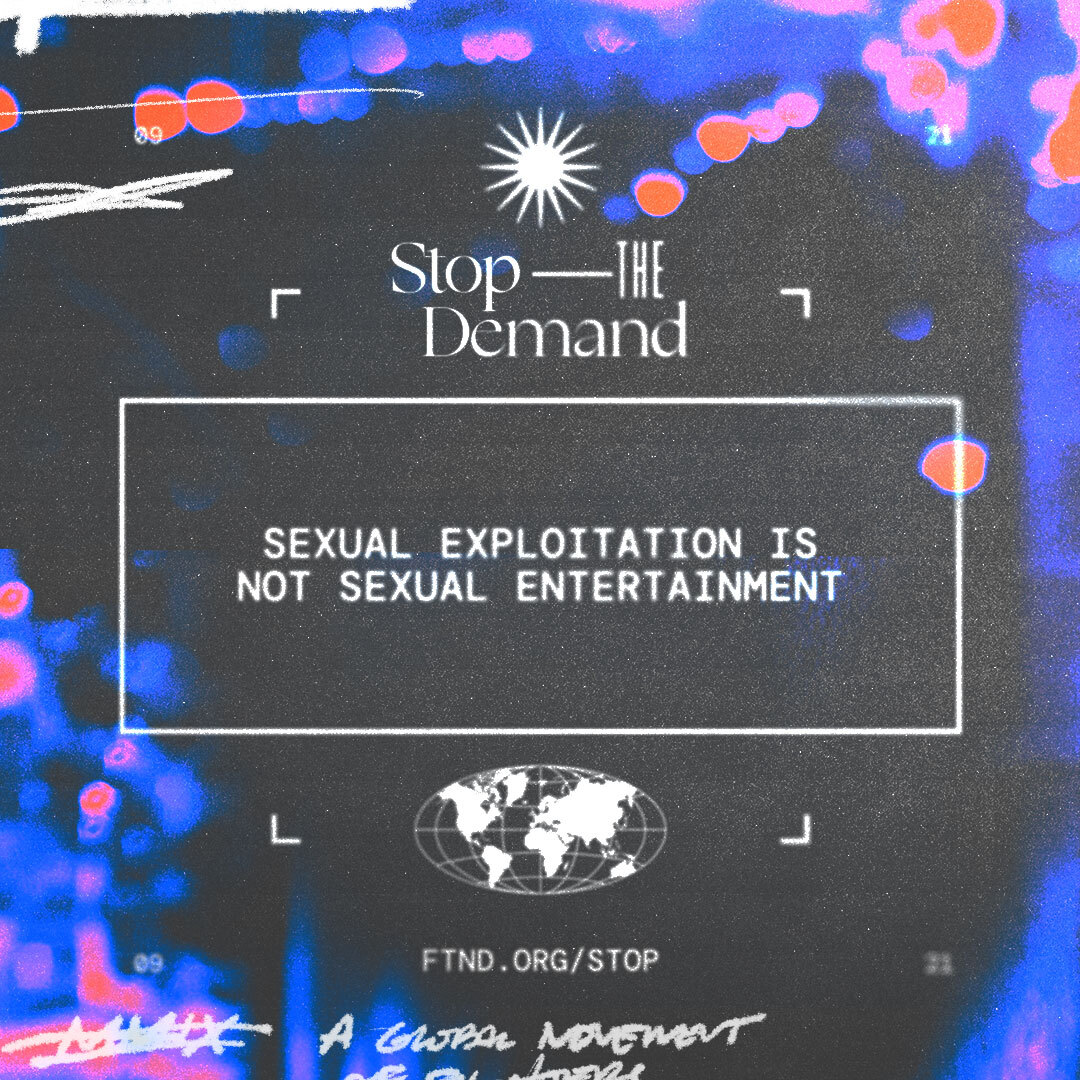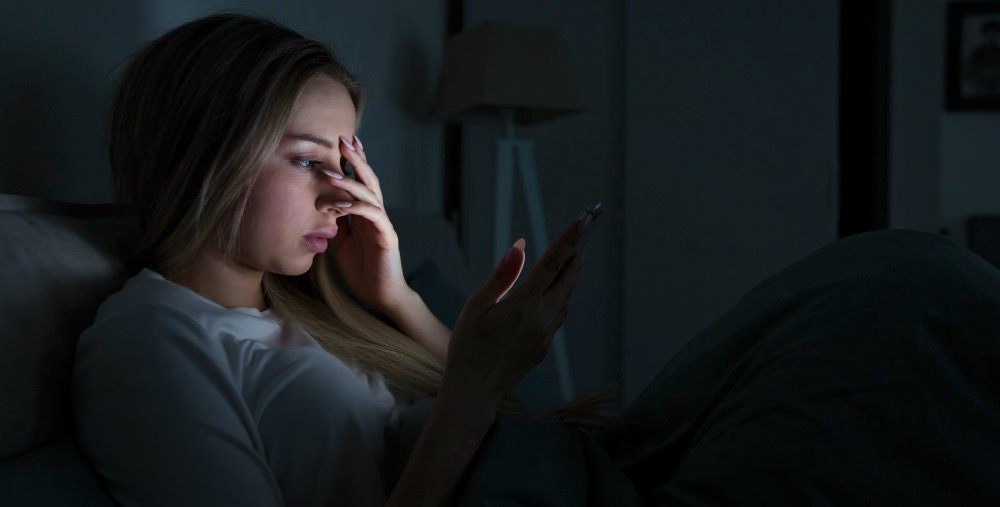Every other day, it seems like a celebrity has private, explicit photos or videos of them released without their consent.
So at this point, we’re all probably a little too familiar with the issue of revenge porn—also known as nonconsensual pornography or image-based abuse.
Revenge porn is a subcategory of an even larger problem, known as nonconsensual pornography sharing. Nonconsensual pornography sharing is basically when nude or nearly nude pictures/videos are posted on the internet without the permission of the person in the photo or video.
Related: Sexting Linked To Increased Porn Consumption, Relationship Insecurity, And Cheating
Sometimes this happens because their ex wants to get back at them for something, like with Blac Chyna and Rob Kardashian a few years back. Sometimes it’s internet trolls that hack into personal accounts and steal private pictures, like with Charlie Evens back in 2015. There are even Facebook groups and entire websites of personal-photo hunters that seek out and trade explicit pictures of women in their personal circles.
Many of these are posted with the identification of those who are pictured, so the violated person can’t escape harassment. These pictures are either stolen or used by someone the victim trusted in order to humiliate and abuse them.
An everyday people problem
But this doesn’t just happen with celebrities. This problem is a lot more common than you might think among average, everyday people.
Although the majority of states have passed legislation attempting to criminalize revenge porn and federal legislation is waiting to be passed (with bipartisan support), image-based abuse is still very much a part of our society—and it mostly affects young people.
So in order to raise awareness about the prevalence and seriousness of this issue, here are some quick stats about image-based abuse.
1. An estimated 1 in 12 U.S. adults report that they have been victims of image-based abuse.Ruvalcaba, Y., & Eaton, A. A. (2020). Nonconsensual pornography among U.S. adults: A sexual scripts framework on victimization, perpetration, and health correlates for women and men. Psychology of Violence, 10(1), 68-78. doi:10.1037/vio0000233Copy
2. 1 in 20 U.S. adults report that they have been perpetrators of image-based abuse.Ruvalcaba, Y., & Eaton, A. A. (2020). Nonconsensual pornography among U.S. adults: A sexual scripts framework on victimization, perpetration, and health correlates for women and men. Psychology of Violence, 10(1), 68-78. doi:10.1037/vio0000233Copy
3. Young people ages 15–29 are most likely to report being threatened by revenge porn sharing.Lenhart, A., Ybarra, M., & Price-Feeney, M. (2016). Nonconsensual image sharing: One in 25 Americans has been a victim of “revenge porn”. Data & Society Research Institute. Retrieved from https://datasociety.net/pubs/oh/Nonconsensual_Image_Sharing_2016.pdfCopy
4. Young people 18–29 are most likely to report having had intimate photos publicly posted of them without consent.Lenhart, A., Ybarra, M., & Price-Feeney, M. (2016). Nonconsensual image sharing: One in 25 Americans has been a victim of “revenge porn”. Data & Society Research Institute. Retrieved from https://datasociety.net/pubs/oh/Nonconsensual_Image_Sharing_2016.pdfCopy
5. Individuals from low-income households are disproportionately likely to be victims of image-based abuse.Lenhart, A., Ybarra, M., & Price-Feeney, M. (2016). Nonconsensual image sharing: One in 25 Americans has been a victim of “revenge porn”. Data & Society Research Institute. Retrieved from https://datasociety.net/pubs/oh/Nonconsensual_Image_Sharing_2016.pdfCopy
6. People of color are more likely to be victims of image-based abuse.Lenhart, A., Ybarra, M., & Price-Feeney, M. (2016). Nonconsensual image sharing: One in 25 Americans has been a victim of “revenge porn”. Data & Society Research Institute. Retrieved from https://datasociety.net/pubs/oh/Nonconsensual_Image_Sharing_2016.pdfCopy
7. LGBTQ+ people are at much higher risk for image-based abuse than heterosexual people, with 17% of LGBTQ+ internet users reporting that they have been threatened or actually had pictures posted of them.Lenhart, A., Ybarra, M., & Price-Feeney, M. (2016). Nonconsensual image sharing: One in 25 Americans has been a victim of “revenge porn”. Data & Society Research Institute. Retrieved from https://datasociety.net/pubs/oh/Nonconsensual_Image_Sharing_2016.pdfCopy
8. According to a recent study from the University of Kent, a shocking 99% of those surveyed expressed at least some approval of the posting of revenge porn.Pina, A., Holland, J., & James, M. (2017). The Malevolent Side of Revenge Porn Proclivity: Dark Personality Traits and Sexist Ideology. Int. J. Technoethics, 8, 30-43.Copy
9. An estimated 12% of teens have forwarded sexts without consent, according to one study.Madigan, S., Ly, A., Rash, C. L., Van Ouytsel, J., & Temple, J. R. (2018). Prevalence of multiple forms of sexting behavior among youth: A systematic review and meta-analysis. JAMA Pediatrics, 172(4), 327-335. doi:10.1001/jamapediatrics.2017.5314Copy
10. 1 in 3 college students report having visited “slutpages”—nonconsensual nude-sharing sites.Maas, M. K., Cary, K. M., Clancy, E. M., Klettke, B., McCauley, H. L., & Temple, J. R. (2021). Slutpage Use Among U.S. College Students: The Secret and Social Platforms of Image-Based Sexual Abuse. Archives of sexual behavior, 10.1007/s10508-021-01920-1. Advance online publication. https://doi.org/10.1007/s10508-021-01920-1Copy
11. Approximately 1 in 5 girls and 1 in 10 boys aged 13-17 report sharing their own nudes.Thorn. (2020). Thorn research: Understanding sexually explicit images, self-produced by children. Retrieved from https://www.thorn.org/blog/thorn-research-understanding-sexually-explicit-images-self-produced-by-children/Copy
12. 1 in 3 underage teens report having seen nonconsensually shared nudes of other minors—which legally qualifies as “child pornography”.Thorn. (2020). Thorn research: Understanding sexually explicit images, self-produced by children. Retrieved from https://www.thorn.org/blog/thorn-research-understanding-sexually-explicit-images-self-produced-by-children/Copy
13. Many victims of image-based abuse experience severe and disruptive mental health effects including PTSD, anxiety, and depression.Bates, S. (2017). Revenge Porn and Mental Health: A Qualitative Analysis of the Mental Health Effects of Revenge Porn on Female Survivors. Feminist Criminology, 12(1), 22–42. https://doi.org/10.1177/1557085116654565Copy
14. According to longitudinal research, porn consumers report a greater willingness to share sexts without consent.van Oosten, J., & Vandenbosch, L. (2020). Predicting the Willingness to Engage in Non-Consensual Forwarding of Sexts: The Role of Pornography and Instrumental Notions of Sex. Archives of sexual behavior, 49(4), 1121–1132. https://doi.org/10.1007/s10508-019-01580-2Copy
15. An estimated 43% of victims of image-based abuse report that their devices or accounts have been hacked.Lenhart, A., Ybarra, M., & Price-Feeney, M. (2016). Nonconsensual image sharing: One in 25 Americans has been a victim of “revenge porn”. Data & Society Research Institute. Retrieved from https://datasociety.net/pubs/oh/Nonconsensual_Image_Sharing_2016.pdfCopy
So, now we can see how common and concerning this problem is, but what does this kind of exploitation do to its survivors?
Related: “Am I In Porn?”: This Tool Searches Porn Sites To See If Your Images Are Used In Videos
Revenge porn on porn sites
Unfortunately, image-based sexual abuse and nonconsensual pornography are increasingly common issues on porn sites. Most porn sites do not verify age or consent, meaning virtually anyone can post anything—including image-based sexual abuse.
In fact, there have been many documented instances of verified accounts posting nonconsensual content or even child sexual abuse material (aka “child porn”) on porn sites.Pornhub sued by 40 Girls Do Porn sex trafficking victim. (2020). BBC News. Retrieved from https://www.bbc.com/news/technology-55333403Copy ParlVu. (2021). Meeting no. 20 ETHI— Standing committee on access to information, privacy and ethics. Retrieved from https://parlvu.parl.gc.ca/Harmony/en/PowerBrowser/PowerBrowserV2/20210219/-1/34789?Language=English&Stream=VideoCopy
Related: This U.S. Bill Could Make Sharing “Revenge Porn” A Federal Crime
As one victim of image-based sexual abuse said, “The videos of me being on Pornhub has affected my life to the point where I don’t leave my house anymore. I stopped being able to work just because I was too scared to be out in public around other people. And I feel like everyone who looks at me has looked at those videos.”Standing committee on access to information, privacy and ethics: ETHI, (2021). Retrieved from https://www.ourcommons.ca/DocumentViewer/en/43-2/ETHI/meeting-21/evidence#Int-11143544Copy
Our society has finally started speaking out against victim-blaming when it comes to sexual assault, but there’s no doubt that we have a long way to go when it comes to victim-blaming people for revenge porn.
It’s time to stand together fight for love, not exploitation or humiliation.
Click here to learn what you can do if you are a victim of image-based abuse or revenge porn.

Your Support Matters Now More Than Ever
Most kids today are exposed to porn by the age of 12. By the time they’re teenagers, 75% of boys and 70% of girls have already viewed itRobb, M.B., & Mann, S. (2023). Teens and pornography. San Francisco, CA: Common Sense.Copy —often before they’ve had a single healthy conversation about it.
Even more concerning: over half of boys and nearly 40% of girls believe porn is a realistic depiction of sexMartellozzo, E., Monaghan, A., Adler, J. R., Davidson, J., Leyva, R., & Horvath, M. A. H. (2016). “I wasn’t sure it was normal to watch it”: A quantitative and qualitative examination of the impact of online pornography on the values, attitudes, beliefs and behaviours of children and young people. Middlesex University, NSPCC, & Office of the Children’s Commissioner.Copy . And among teens who have seen porn, more than 79% of teens use it to learn how to have sexRobb, M.B., & Mann, S. (2023). Teens and pornography. San Francisco, CA: Common Sense.Copy . That means millions of young people are getting sex ed from violent, degrading content, which becomes their baseline understanding of intimacy. Out of the most popular porn, 33%-88% of videos contain physical aggression and nonconsensual violence-related themesFritz, N., Malic, V., Paul, B., & Zhou, Y. (2020). A descriptive analysis of the types, targets, and relative frequency of aggression in mainstream pornography. Archives of Sexual Behavior, 49(8), 3041-3053. doi:10.1007/s10508-020-01773-0Copy Bridges et al., 2010, “Aggression and Sexual Behavior in Best-Selling Pornography Videos: A Content Analysis,” Violence Against Women.Copy .
From increasing rates of loneliness, depression, and self-doubt, to distorted views of sex, reduced relationship satisfaction, and riskier sexual behavior among teens, porn is impacting individuals, relationships, and society worldwideFight the New Drug. (2024, May). Get the Facts (Series of web articles). Fight the New Drug.Copy .
This is why Fight the New Drug exists—but we can’t do it without you.
Your donation directly fuels the creation of new educational resources, including our awareness-raising videos, podcasts, research-driven articles, engaging school presentations, and digital tools that reach youth where they are: online and in school. It equips individuals, parents, educators, and youth with trustworthy resources to start the conversation.
Will you join us? We’re grateful for whatever you can give—but a recurring donation makes the biggest difference. Every dollar directly supports our vital work, and every individual we reach decreases sexual exploitation. Let’s fight for real love:




